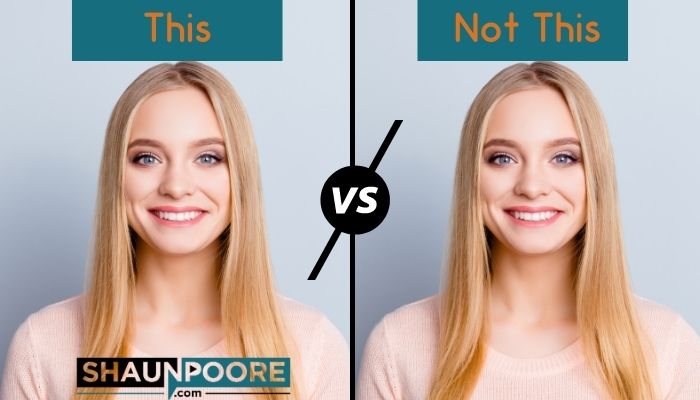What To Do If Somebody Steals Your Blog Content (DMCA Takedown Guide)
So you start blogging and then discover another site has been blatantly copying your work. What on earth do you do?
1) Relax
Unless the site that’s copying your work is outranking you in Google, it’s probably not doing very much harm to your blog. While you may want to consider taking action, this is not a reason to panic.

Remember, the age and reputation of your domain are huge ranking factors (more-so than the content or the idea itself). A thief can’t pop up overnight, copy your blog, and instantly outrank you in Google (unless you’re on a brand new domain).
For this reason, established bloggers don’t lose a ton of sleep at night over the thought of somebody copying them. Copycats won’t outrank them, and even if they did, it’s relatively easy to have them taken down.
2) Realize Spun Content Isn’t Thievery
I understand how infuriating it is when you were the first person to write about a subject, only to find several copycats in the SERP a few months later.
But, you can’t own an entire subject (without a patent). Somebody else writing about the same thing isn’t copying (even if the content is eerily similar). As long as they didn’t take your images or use your exact words, they didn’t violate your copyright. When this happens (which it will if you’re a successful blogger), you need to relax about it.
I’ve written an entire blog post about why spinning the top content of rival blogs terrible strategy. Again, relax, it’s not very likely a new blogger can defeat you this way.
3) Interlink To Your Other Posts

Let’s take some small actions that will make it harder for thieves to blatantly rip us off. The first thing to do is to make sure you’re interlinking to a few of your other blog posts in each article—this is a good idea for a few reasons.
- It’s good practice regardless as to if somebody’s copying you. Internal linking and niche topic clustering can help your other posts rise in the SERP.
- If the thief doesn’t remove your links, it’ll help with our DMCA takedown request that we’ll file later.
4) Add Branded Images to Your Blog Posts

When thieves get faced with your logo in an image, they have two bad options to choose from.
- Leave the stolen image or illustrations on their stolen page (will make it easy for us to file a DMCA takedown).
- Take the image out of the post and get outranked in Google (the same post with media will rank higher).
Having images in your blog posts with your logo (or yourself) in them is akin to buying a security system for your home. It might be enough to discourage a thief from trying; regardless, you’ll have the evidence needed to take them down.
5) Add Branded YouTube Videos To Your Blog Posts
Google loves multimedia embedded into a blog post. If a thief copies your blog post but leaves out the embedded YouTube video, they have a 0% chance of outranking you in Google.
And unlike somebody cropping my logo out of the corner of an image I created. How on earth could somebody crop me out of the YouTube video above? This will be an open and shut DMCA takedown request.
6) Set Canonical URL’s
A canonical URL will suggest the definitive URL of syndicated content to search engines. In layman’s terms, a canonical URL might prevent Google from listing a word for word copy of your article in the SERP.
However, a canonical URL won’t work if the content is significantly modified. It also won’t work if the thief only stole a small passage. Plus, a canonical URL is only a suggestion, not a directive; thieves can still outrank you if they have a more authoritative website. Still, it’s good practice to have the canonical URL on all of your blog posts.
<link rel="canonical" href="https://www.shaunpoore.com/steal-blog-content/" />
7) Ask The Thieves To Stop
There are two types of content thieves out there.
- A thief that knows they’re stealing and doesn’t care.
- A random noob who didn’t know any better.
There was a time in the early 2000s (20-ish years ago) when I didn’t know copying images from Google images wasn’t kosher. If somebody had emailed me and let me know, I quickly would have taken the content down. If that’s the type of thief you’re dealing with, a simple “Please take this down” message could be enough to get them to stop.
8) Assemble Evidence
Before you can go after your thief, you’ll need to gather obvious evidence that they were copying you. Try and note the following.
- Posts they copied word for word (And hard evidence/pictures of when you published them, 3rd parties like Google / Wayback Machine also have this information and proves it’s not forged).
- Stolen images / multimedia.
- If they copied all the links to your other articles, it might be worth noting.
- Leave easter eggs in your content for them to copy and then report that. For instance images have metadata fields you can fill out that if they showed up on a foreign site would be pretty convincing evidence that you created it.
9) File DMCA Takedown Requests
OK, You’ve decided the thief is doing serious damage to your business / brand, and you need to have them taken down. Take the evidence you’ve gathered in the previous step and then do the following.
File a DMCA Takedown Notice with Google
Google has a webpage where you can ask for content to be taken down. I’d walk you through the process but this is serious business and as far as I know nobody is copying me right now. However, this website documented the process if you want to have a look.
Filing the request with Google may solve the most significant problem (the stolen content outranking you in Google). But, even if you’re successful, it doesn’t get it removed from the Internet at large. For that, we need to move on to the next two options.
File a DMCA Takedown Notice With Their Domain Registrar
There are dozens of registrars out there, and they’ll each have their own DMCA takedown process. Google “Registrar name DMCA takedown” to find their takedown instructions. For instance, here are NameCheap’s and GoDaddy’s DMCA takedown forms.
Identifying a website’s registrar seems like the challenging part, but luckily, it’s fairly simple. Go to https://lookup.icann.org/lookup, type in their domain name, and it should be listed under Registrar Information.
File a DMCA Takedown Notice With their Hosting Provider
If the previous option(s) doesn’t work, you can also file a request with their hosting provider. Again, go to https://lookup.icann.org/lookup, type in their domain name, and whatever company is listed under their name servers should give some clue as to who their hosting provider is.
For example, my nameserver info currently says “GOOGLEDOMAINS.COM” because I’m using Google’s cloud platform to host this website. I could then Google “Google cloud platform DMCA takedown” and find this link to perform the DMCA takedown process.
Thanks for reading, and don’t copy me!


